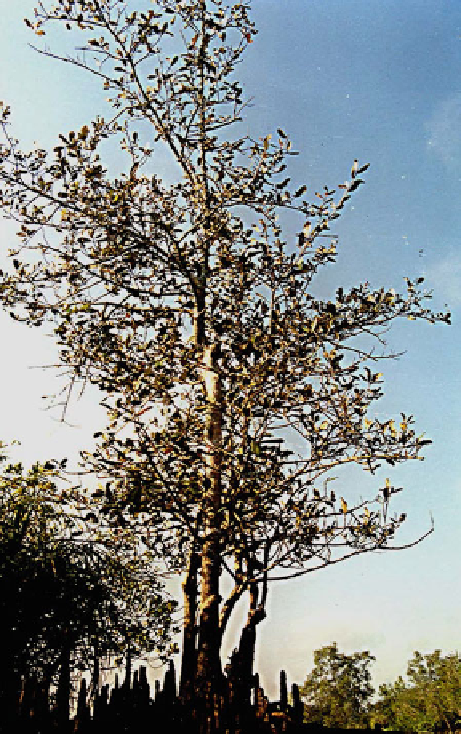Environmental Engineering Reference
In-Depth Information
Fig. 4.11
Freshwater-loving Sundari (
Hertiera fomes
) is gradually vanishing from the Matla riverine zone: a threat
posed by rising salinity
carbon dioxide (Ball et al.
1997
). The mangroves
were grown in glasshouses for 14 weeks with
different combinations of atmospheric carbon
dioxide (340 and 700 ppm), relative humidity (43
and 86 %) and salinity (25 and 75 % of sea
water) to determine the effects of these variables
on their development and growth (Ball et al.
1997
). Although
both species increased with atmospheric carbon
dioxide enrichment in the lower salt environment
(Ball et al.
1997
). These scientists postulated that
increased levels of carbon dioxide might allow
these two mangrove species to expand into areas
of greater aridity, thus increasing species diver-
sity in those regions.
Snedaker and Ara
has a slower relative
growth rate and greater salt
R. stylosa
ú
jo (
1998
) exposed four
tolerance than
R.
mangrove species
R. mangle
,
Avicennia ger-
apiculata
, the scientists concluded that elevated
carbon dioxide signi
minans, Laguncularia racemosa
and
Conocar-
cantly increased rates of net
photosynthesis in both mangrove species, but
only when grown at the lower salinity level. In
addition, while increased carbon dioxide levels
did not signi
pus
erectus
to
increased
carbon
dioxide
(361
485 ppm). All four species demonstrated
-
signi
cant decreases in stomatal conductance and
transpiration and an increase in instantaneous
transpiration ef
cantly affect the relative growth
rate of either species, the average growth rates of
ciency. Only
L. racemosa
dem-
onstrated a signi
cant decrease in net primary

